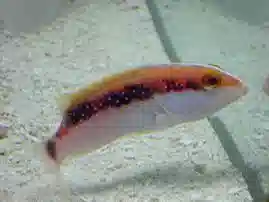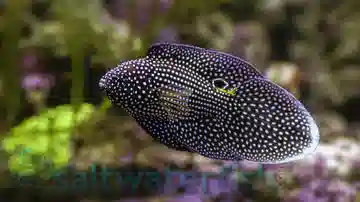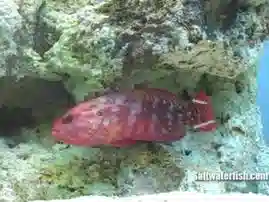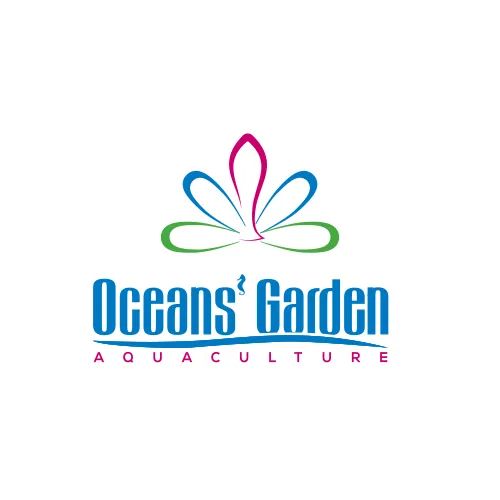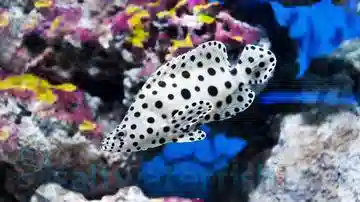Panther Grouper
Cromileptes altivelis
(0 Reviews)
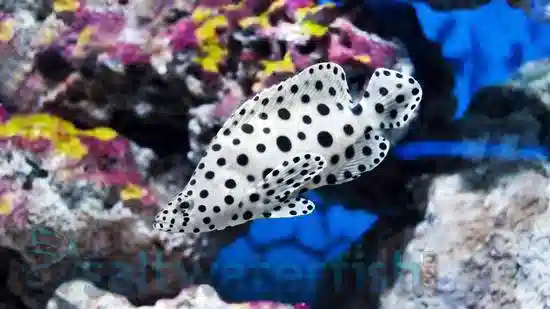
Panther Grouper
Cromileptes altivelis
(0 Reviews)
{{ item.name }}
Size: {{ item.extra_field_3 }}
${{ getFormattedPrice(item.saleprice) }} ${{ getFormattedPrice(item.price) }}
To join the waiting list, click here
Free Shipping
With
$199.00
or more in Marine Life.
More details...
Panther Grouper Care Facts
| Size: | 2.5-3.5 inches |
|---|---|
| Care Level: | Easy |
| Temperament: | Aggressive |
| Reef Safe: | Monitor |
| Diet: | Carnivore |
| Origin: | Indian Ocean |
| Acclimation Time: | 3+ hours |
| Coral Safe: | Yes |
| Invertebrate Safe: | No |
| Minimum Tank Size: | 50 gallons |
The Panther Grouper, Cromileptes altivelis, also known as the Polka Dot Grouper, Barramundi Cod, Humback Grouper, and High-Finned Grouper, has a beautiful silver body with black spots all over. This Grouper is widely available, gorgeous and hardy, but is a powerful predator. They should not be housed with small inverts or fishes They thrive best in tanks with a good filtration system to cycle waste as well as plenty of live rock hiding places.
The Panther Grouper Overview
The Panther Grouper (Cromileptes altivelis), a captivating species for saltwater marine aquarium enthusiasts, demands attention due to its unique characteristics and stunning appearance. Native to the Indo-Pacific region, this grouper inhabits coral reefs and rocky areas, making it a fascinating addition to a well-maintained marine tank.
Habitat: Creating the Ideal Environment for Panther Groupers
Panther Groupers prefer coral-rich environments with ample hiding spots among rocks and crevices in the wild. When recreating their habitat in captivity, provide sufficient hiding places, such as caves or overhangs, to ensure the Panther Grouper feels secure and exhibits its natural behavior.
Reef Safety: Considerations for Reef Aquariums
It's important to note that Panther Groupers are not considered reef-safe, as they may exhibit predatory behavior towards smaller fish and invertebrates. Therefore, it is advisable to house them in a fish-only or predator-specific aquarium.
Size and Lifespan: Understanding the Growth and Longevity
This grouper species can attain a considerable size, reaching up to 2 feet long. They can live for over a decade with proper care, making them a long-term commitment to dedicated hobbyists.
Diet in Captivity: Providing a Nutrient-Rich Menu
Feeding the Panther Grouper is straightforward. They are carnivores and thrive on a high-quality frozen or fresh seafood diet, such as shrimp, squid, and small fish. Regular feeding schedules are crucial for maintaining their health and vibrancy.
Aquaculture and Availability: Sourcing Panther Groupers Responsibly
Panther Groupers are not commonly aquacultured, making them a sought-after species for marine aquarium enthusiasts. Limited availability contributes to their desirability, and obtaining them from reputable sources like Saltwaterfish.com ensures the highest quality specimens.
Compatibility: Choosing Tank Mates Wisely
This species displays territorial behavior, so careful consideration is needed when selecting tank mates. Compatible tank mates should be of similar size and have a non-aggressive temperament. Avoid housing them with smaller or more passive fish to prevent potential aggression.
Sexual Dimorphism: Identifying Gender Differences
Panther Groupers exhibit minimal sexual dimorphism, with little visual difference between males and females. Therefore, identifying gender visually is challenging, making it essential to monitor their behavior for potential mating interactions.
Juvenile to Adult Coloration Changes: Aesthetic Transformations
As juveniles, Panther Groupers feature vibrant yellow coloring with distinctive black spots. As they mature, their appearance transforms into a striking deep brown or black hue, maintaining their unique and attractive appeal throughout their lifespan.
Temperament: Managing Predatory Behavior
Known for their predatory nature, Panther Groupers may display aggression towards smaller tank mates. Observing their behavior and providing ample space and hiding spots is crucial for maintaining a harmonious aquarium environment.
Tank Requirements: Creating an Ideal Habitat
House Panther Groupers in a spacious tank with a minimum size of 180 gallons for optimal well-being. Maintain stable water conditions with a pH range of 8.1-8.4, salinity between 1.020-1.025, temperature of 76-82°F, and moderate water flow to simulate their natural habitat.
Common Names: Other Titles for the Panther Grouper
The Panther Grouper is called the Humpback Grouper, Highfin Grouper, or Polka Dot Grouper, reflecting its distinctive physical features.
Five Compatible Tank Mates: Choosing Companions for Panther Groupers
- Emperor Angelfish (Pomacanthus imperator)
- Niger Triggerfish (Odonus niger)
- Harlequin Tuskfish (Choerodon fasciatus)
- Dogface Puffer (Arothron nigropunctatus)
- Coral Grouper (Cephalopholis miniata)
Why Choose Saltwaterfish.com: Ensuring Quality and Reliability
Sourcing a Panther Grouper from Saltwaterfish.com ensures reliability, quality, and a seamless shopping experience. With a commitment to delivering healthy and vibrant marine life, Saltwaterfish.com stands out as a trusted supplier, allowing enthusiasts to enjoy the beauty of the Panther Grouper in their home aquariums.
Currently Panther Grouper does not have any reviews.


